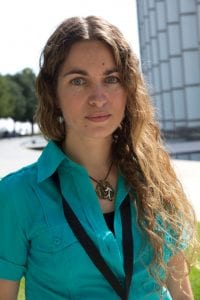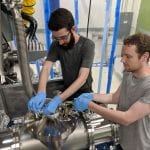The Penn State group participates in the Neutrino Day 2019!
Neutrino Day is the science festival organized by the Sanford Laboratory in Lead, SD, where the LZ dark matter detector is located. Penn State graduate students Dan Kodroff and Gavin Cox volunteered to help with the festival, hosting a booth to explain the some cosmology and dark matter to visitors!
It’s #NeutrinoDay! 🎉 Make sure you stop by the @SanfordLab Visitor Center and learn all about #darkmatter! LZ will detect #neutrinos too – we will mostly see ones from the sun ☀️. Watch out, they can look just like dark matter in our detector… pic.twitter.com/JpWhBGPDGf
— LZ Dark Matter (@lzdarkmatter) July 13, 2019
More pictures:



















